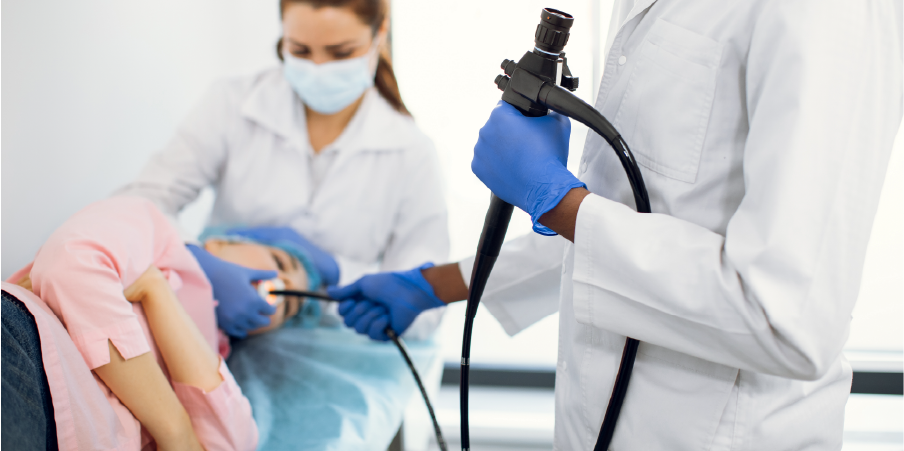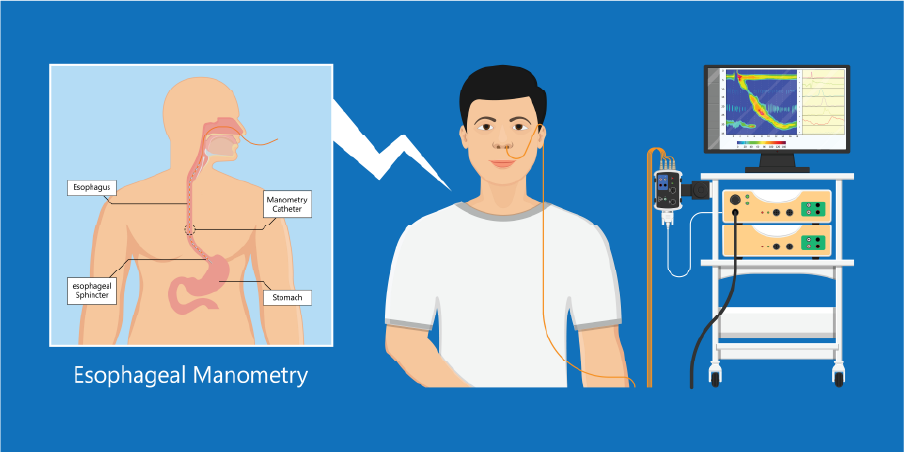Nội dung của trang này:
Nội dung của trang này:
Laboratory Tests and Ancillaries
Proton Pump Inhibitor (PPI) Diagnostic Test
In patients with typical symptoms and who do not have symptoms suggestive of complications, an empiric trial of anti-secretory therapy may be considered since diagnostic modalities cannot reliably exclude gastroesophageal reflux disease even if they are negative. A favorable symptomatic response to a short course of proton pump inhibitor (once daily for 8 weeks) is considered to support a diagnosis of gastroesophageal reflux disease when symptoms of non-cardiac chest pain are present, though a negative test does not rule out gastroesophageal reflux disease.
Imaging
Diagnostic Tests
There is no gold standard for the diagnosis of gastroesophageal reflux disease. An objective diagnostic tool with acceptable specificity and sensitivity is still lacking. Endoscopy is positive in only about 40% of cases.
The diagnosis of gastroesophageal reflux disease may be confirmed if at least one of the following conditions is met: The presence of a peptic stricture in the absence of malignancy; the presence of an esophageal mucosal break on endoscopy; Barrett’s esophagus on biopsy; and a positive pH-metry.
Endoscopy
 Gastroesophageal Reflux Disease_Diagnotics 1
Gastroesophageal Reflux Disease_Diagnotics 1
An endoscopy has a high specificity (95%) but low sensitivity (<50%). Sixty percent (60%) of patients with gastroesophageal reflux disease actually have non-erosive reflux disease. Endoscopy is indicated in the following: At initial visit if patient has alarm features or with risk factors for Barrett's esophagus (eg family history of Barrett's esophagus and/or esophageal adenocarcinoma, gastroesophageal reflux disease with another risk factor [eg age >50 years old, male sex, white race, smoking, obesity]); during treatment if patient has new-onset alarm symptoms; for patients who do not adequately respond 2-4 weeks after an 8-week proton pump inhibitor diagnostic test; posttreatment if patient has partial or no symptom response after an 8-week twice-daily proton pump inhibitor therapy for refractory gastroesophageal reflux disease, after a 12-week proton pump inhibitor therapy for moderate to severe esophagitis, or if patient has unsatisfactory relief after at least a 12-week twice-daily proton pump inhibitor therapy for extraesophageal gastroesophageal reflux disease; as part of work-up before antireflux surgery; may be considered in patients who have reflux symptoms and have undergone sleeve gastrectomy to screen for Barrett's esophagus; may be performed 3 years after sleeve gastrectomy in asymptomatic patients then every 5 years thereafter; and may be considered in symptomatic patients who have undergone per oral endoscopic myotomy (POEM). Endoscopy with biopsy may be done to target any areas of suspected metaplasia, dysplasia, or malignancy. This is used in patients with an esophageal gastroesophageal reflux disease syndrome with troublesome dysphagia. This should also be performed in patients with risk factors for Barrett's esophagus. Biopsy is not indicated when endoscopy is normal.
Manometry
 Gastroesophageal Reflux Disease_Diagnotics 2
Gastroesophageal Reflux Disease_Diagnotics 2
Manometry evaluates patients with suspected esophageal gastroesophageal reflux disease syndrome who have not responded to an empiric trial of twice-daily proton pump inhibitor therapy and have normal findings on endoscopy. This is recommended in preoperative evaluation of patients but has no role in the diagnosis of gastroesophageal reflux disease. This is used to rule out other motility disorders (eg achalasia). This will serve to localize the lower esophageal sphincter for potential subsequent pH monitoring, to evaluate peristaltic function prior to surgery, and to diagnose subtle presentations of major motor disorders. High-resolution manometry is recommended over manual manometry due to the former’s superior sensitivity in identifying atypical cases of achalasia and distal esophageal spasm.
Ambulatory 24-hour Esophageal pH/Impedance, Catheter pH, or Wireless pH Monitoring
An ambulatory 24-hour esophageal pH/impedance assessment is for patients with a suspected esophageal gastroesophageal reflux disease syndrome who have not responded to an empiric trial of twice-daily proton pump inhibitor therapy, have normal endoscopic findings, and without major abnormality on manometry. This is indicated prior to consideration of endoscopic or surgical therapy in patients with non-erosive disease. This is indicated for patients with atypical or extra-esophageal gastroesophageal reflux disease symptoms (eg chest pain, cough, hoarseness, throat clearing). This is the only test that can assess frequency of reflux, presence of abnormal acid exposure of the esophagus, and the reflux symptom association. Proton pump inhibitor therapy should be discontinued for 7 days prior to its performance. Reflux monitoring while on proton pump inhibitor therapy is suggested in patients who are diagnosed with gastroesophageal reflux disease but have potential reflux-related symptoms that do not adequately respond to proton pump inhibitors. Wireless pH monitoring has superior sensitivity in detecting pathological esophageal acid exposure since it has a longer period of recording (up to 96 hours) and has shown superior recording accuracy compared with other catheter studies. Reflux monitoring is not recommended in the routine investigation of extraesophageal gastroesophageal reflux disease in Asia.
Other Tests
A barium esophagogram may help in the evaluation of major motor disorders (eg achalasia, diffuse esophageal spasm) after a normal endoscopy or in the preoperative phase of antireflux surgery. Consider the overlapping of symptoms of gastroesophageal reflux disease, functional dyspepsia and inflammatory bowel syndrome (IBS) and the coexistence of serious GI disorders (eg gastric cancer or peptic ulcer) in planning for further diagnostic tests.
